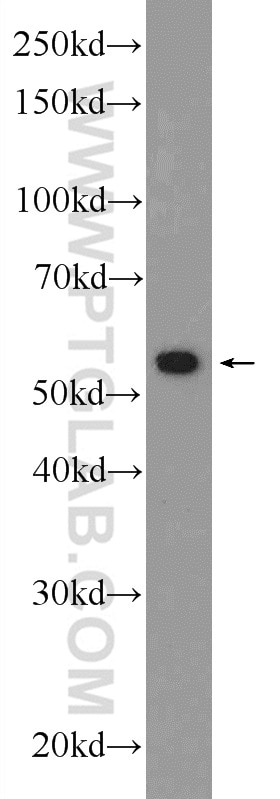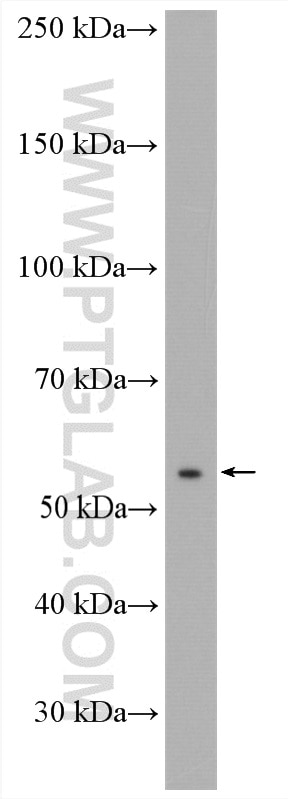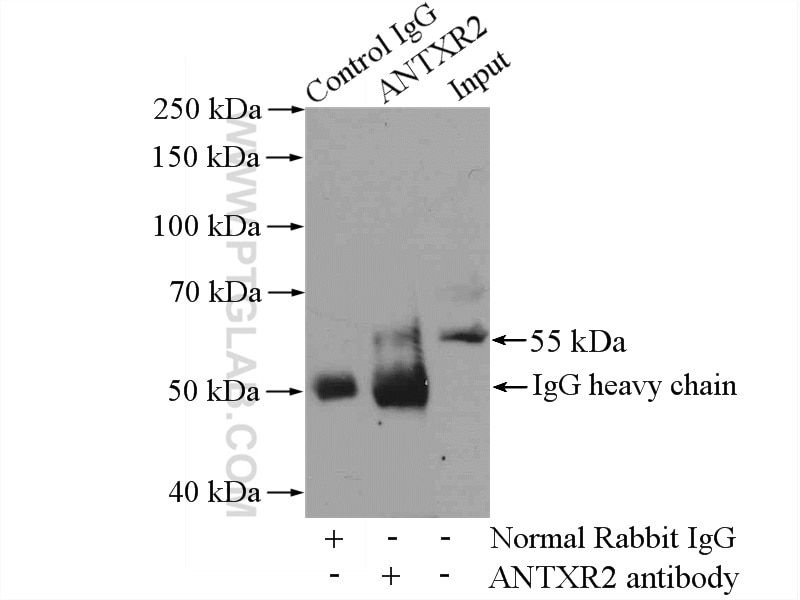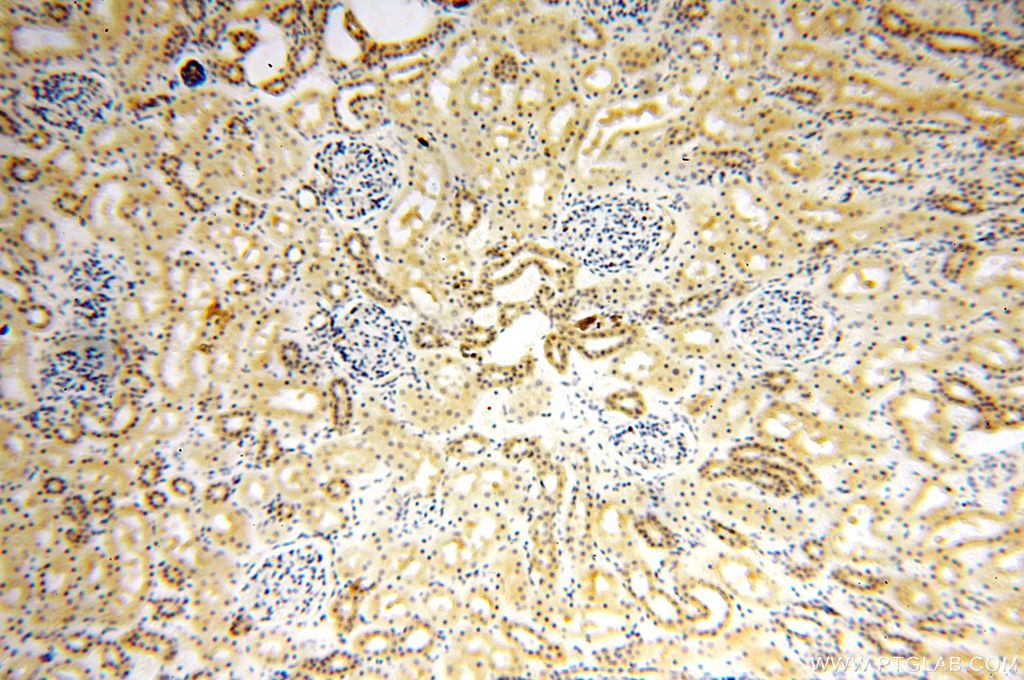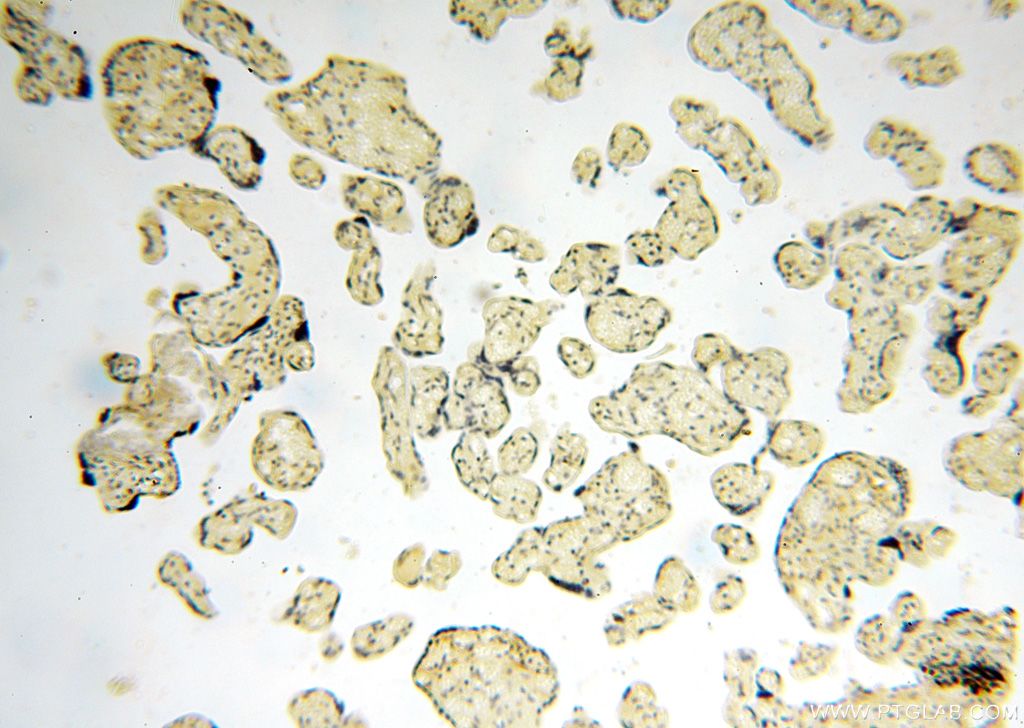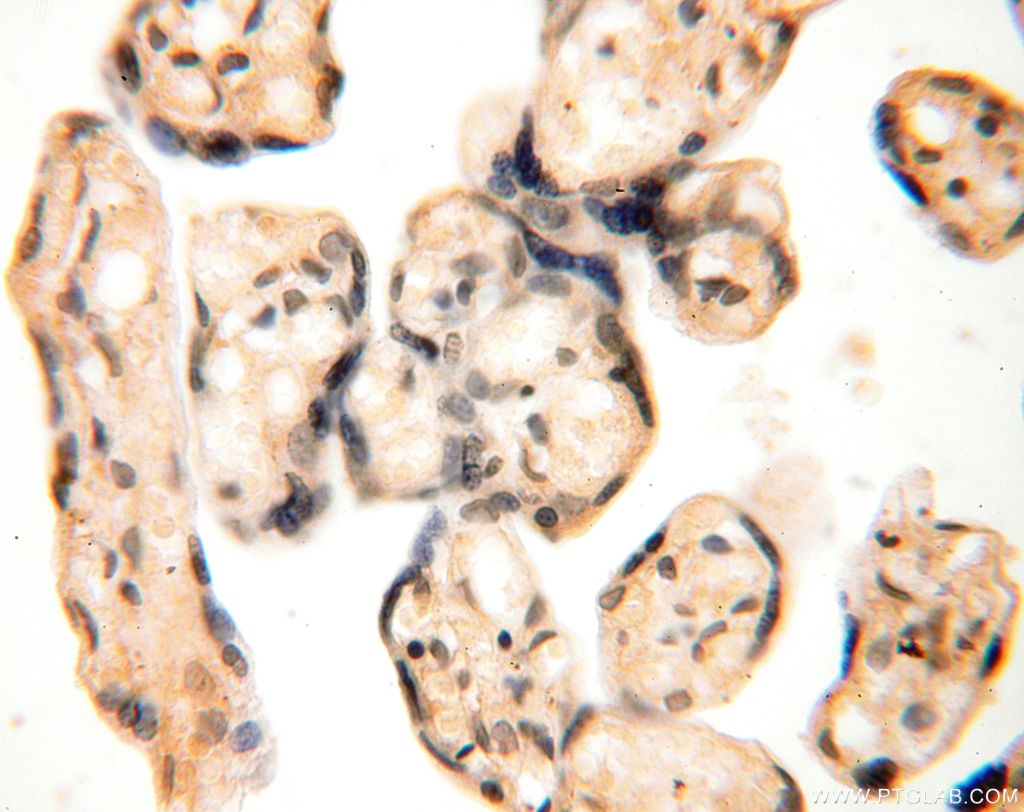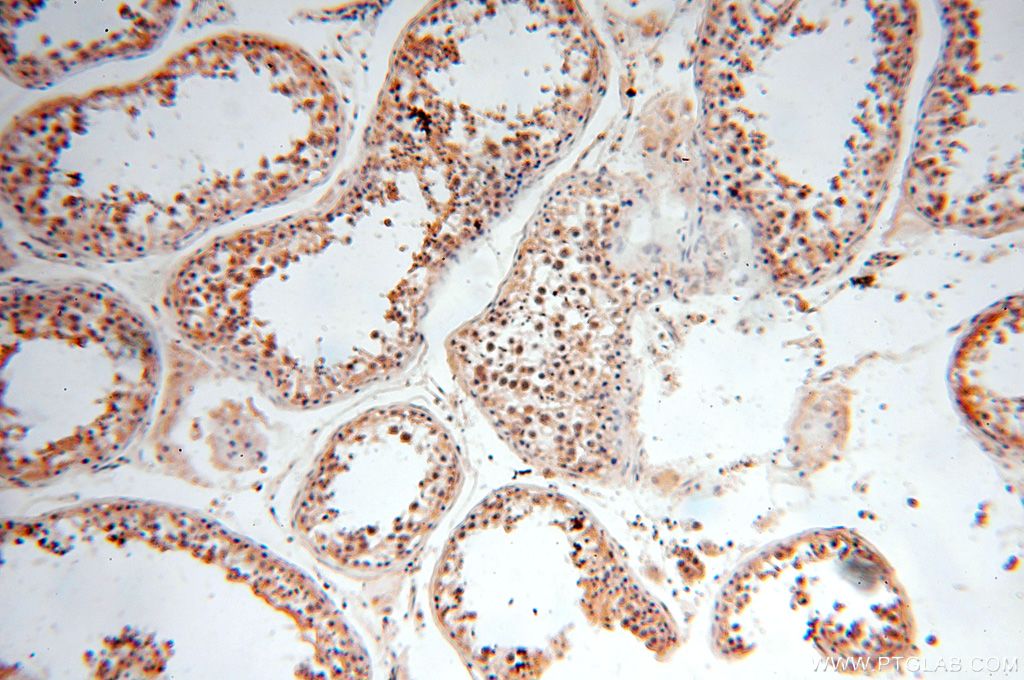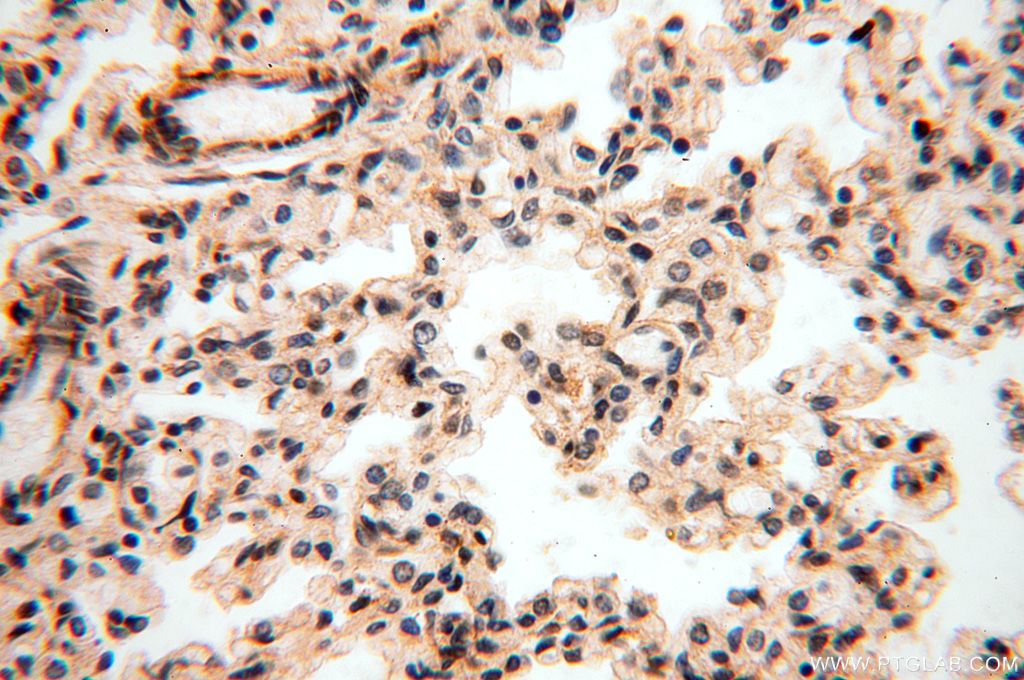Tested Applications
| Positive WB detected in | HEK-293 cells, PC-3 cells |
| Positive IP detected in | HEK-293 cells |
| Positive IHC detected in | human ovary tissue, human kidney tissue, human placenta tissue, human testis tissue, human lung tissue Note: suggested antigen retrieval with TE buffer pH 9.0; (*) Alternatively, antigen retrieval may be performed with citrate buffer pH 6.0 |
Recommended dilution
| Application | Dilution |
|---|---|
| Western Blot (WB) | WB : 1:500-1:1000 |
| Immunoprecipitation (IP) | IP : 0.5-4.0 ug for 1.0-3.0 mg of total protein lysate |
| Immunohistochemistry (IHC) | IHC : 1:50-1:500 |
| It is recommended that this reagent should be titrated in each testing system to obtain optimal results. | |
| Sample-dependent, Check data in validation data gallery. | |
Published Applications
| KD/KO | See 1 publications below |
| WB | See 6 publications below |
| IHC | See 4 publications below |
| IP | See 1 publications below |
| CoIP | See 1 publications below |
Product Information
16723-1-AP targets ANTXR2 in WB, IHC, IP, CoIP, ELISA applications and shows reactivity with human samples.
| Tested Reactivity | human |
| Cited Reactivity | human, camelus bactrianus |
| Host / Isotype | Rabbit / IgG |
| Class | Polyclonal |
| Type | Antibody |
| Immunogen |
CatNo: Ag10162 Product name: Recombinant human ANTXR2 protein Source: e coli.-derived, PGEX-4T Tag: GST Domain: 25-231 aa of BC107876 Sequence: ISKGLEDLKRVSPVGETYIHEGLKLANEQIQKAGGLKTSSIIIALTDGKLDGLVPSYAEKEAKISRSLGASVYCVGVLDFEQAQLERIADSKEQVFPVKGGFQALKGIINSILAQSCTEILELQPSSVCVGEEFQIVLSGRGFMLGSRNGSVLCTYTVNETYTTSVKPVSVQLNSMLCPAPILNKAGETLDVSVSFNGGKSVISGSL Predict reactive species |
| Full Name | anthrax toxin receptor 2 |
| Calculated Molecular Weight | 54 kDa |
| Observed Molecular Weight | 55 kDa |
| GenBank Accession Number | BC107876 |
| Gene Symbol | ANTXR2 |
| Gene ID (NCBI) | 118429 |
| RRID | AB_2056741 |
| Conjugate | Unconjugated |
| Form | Liquid |
| Purification Method | Antigen affinity purification |
| UNIPROT ID | P58335 |
| Storage Buffer | PBS with 0.02% sodium azide and 50% glycerol, pH 7.3. |
| Storage Conditions | Store at -20°C. Stable for one year after shipment. Aliquoting is unnecessary for -20oC storage. 20ul sizes contain 0.1% BSA. |
Background Information
ANTXR2 (anthrax toxin receptor 2), also known as CMG2 (capillary morphogenesis gene 2 protein) is a transmembrane protein that is induced during capillary morphogenesis. It contains a vWA domain that shows strong binding to laminin and collagen IV, suggesting that this protein plays a role in basement membrane matrix assembly and endothelial cell morphogenesis (PMID: 11683410; 14508707). Like its paralog TEM8 (ANTXR1), ANTXR2 also functions as a receptor for anthrax toxin. Mutations in ANTXR2 result in the allelic disorders juvenile hyaline fibromatosis and infantile systemic hyalinosis (PMID: 14508707; 12973667; 22383261).
Protocols
| Product Specific Protocols | |
|---|---|
| IHC protocol for ANTXR2 antibody 16723-1-AP | Download protocol |
| IP protocol for ANTXR2 antibody 16723-1-AP | Download protocol |
| WB protocol for ANTXR2 antibody 16723-1-AP | Download protocol |
| Standard Protocols | |
|---|---|
| Click here to view our Standard Protocols |
Publications
| Species | Application | Title |
|---|---|---|
Angiogenesis Capillary morphogenesis gene 2 (CMG2) mediates growth factor-induced angiogenesis by regulating endothelial cell chemotaxis.
| ||
Oncogene Capillary morphogenesis gene 2 maintains gastric cancer stem-like cell phenotype by activating a Wnt/β-catenin pathway. | ||
J Pathol Capillary morphogenesis protein 2 is a novel prognostic biomarker and plays oncogenic roles in glioma. | ||
FASEB J Genetic deletion of CMG2 exacerbates systemic-to-pulmonary shunt-induced pulmonary arterial hypertension. | ||
Reprod Domest Anim Screening for reproductive biomarkers in Bactrian camel via iTRAQ analysis of proteomes. | ||
Proc Natl Acad Sci U S A Anthrax toxin requires ZDHHC5-mediated palmitoylation of its surface-processing host enzymes. |

